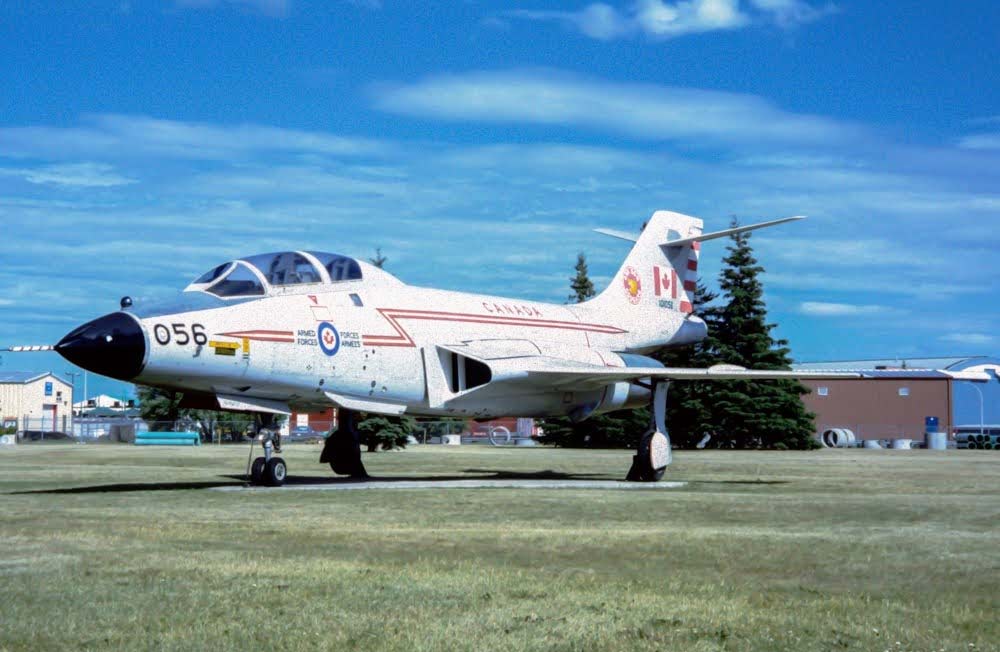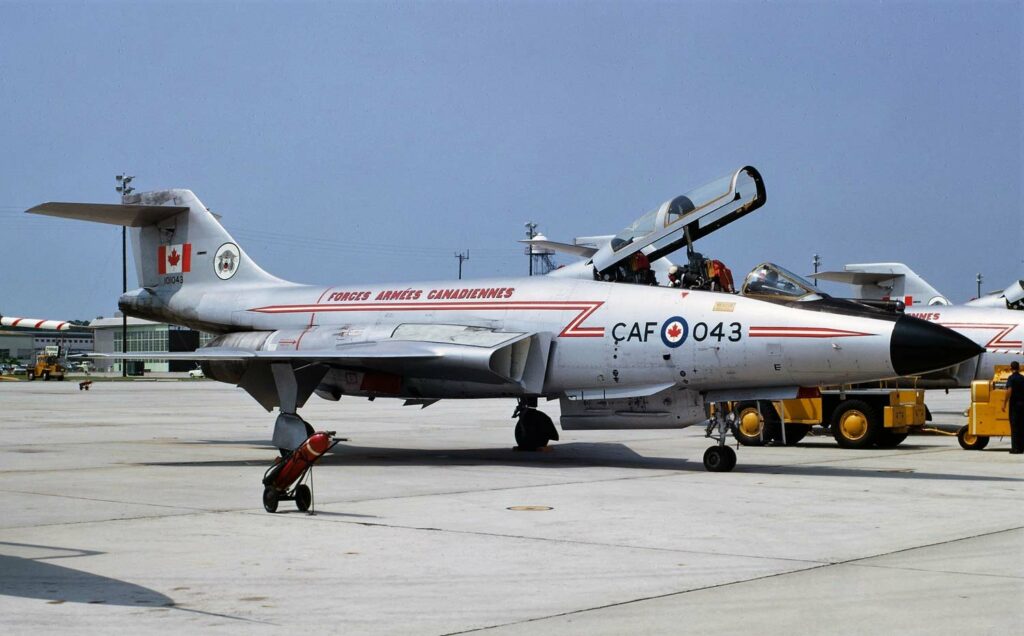The McDonnell CF-101 Voodoo is an all-weather interceptor, twin-engine, nuclear-capable with AIR-2A Genie rocket.
In brief
The McDonnell CF-101 Voodoo, an all-weather interceptor originally designed for the United States Air Force and later adapted for the Royal Canadian Air Force, served from 1961 to 1984. It was powered by two Pratt & Whitney J57-P-55 afterburning turbojet engines, achieving speeds up to Mach 1.72. The CF-101 was notable for carrying the AIR-2A Genie nuclear-tipped unguided rocket, with a range of 1,520 miles and a service ceiling of 55,000 feet. Its primary mission was protecting Canada’s airspace.

History of the Development of the McDonnell CF-101 Voodoo
The CF-101 Voodoo’s development was influenced by the Cold War’s demand for powerful interceptor aircraft to counter potential Soviet threats. Originating from the F-101’s design, which was a continuation of the XF-88 Voodoo, it was adapted to a more comprehensive fighter-bomber and reconnaissance platform before finding a significant role in the RCAF as a successor to the Avro CF-100 Canuck. The cancellation of the CF-105 Arrow, a promising Mach 2-capable interceptor, led to the CF-101’s adoption, marking a significant turn in Canadian aerospace defense strategy and impacting the Canadian aero-industry.
Design of the McDonnell CF-101 Voodoo
The CF-101 featured a twin-seat (tandem) arrangement and was equipped with two Pratt & Whitney J57-P-55 afterburning turbojet engines. This design offered impressive performance characteristics suitable for the interception role. The aircraft’s adoption of nuclear AIR-2A Genie missiles sparked political controversy in Canada, although they never fired a weapon in anger. The Voodoo’s design was marked by its considerable size and fuel capacity, allowing for extended range missions, while its powerful afterburners enabled high-speed performance.
Performance of the McDonnell CF-101 Voodoo
With a top speed reaching Mach 1.72 and the capability to climb to 35,000 feet in as little as 92 seconds under optimal conditions, the CF-101 was a formidable aircraft in terms of speed and agility. It held a transcontinental speed record in the early 1960s and was capable of long, non-stop flights exceeding 1,500 miles. The aircraft’s size, speed, and distinctive noise, especially when igniting the afterburners, made it a memorable part of Canada’s air defense.
Variants of the McDonnell CF-101 Voodoo
The RCAF utilized two primary variants of the CF-101: the CF-101F, a twin-seat, dual-control trainer, and the EF-101B, an electronic warfare platform known as the “Electric Voodoo.” These variants maintained the essential design and capabilities of their F-101 counterparts.

Military Use and Combat of the McDonnell CF-101 Voodoo
Although the CF-101 Voodoo never fired its weapons in combat, it played a crucial role in Canada’s air defense strategy from Quick Reaction Alert facilities. The Voodoo’s primary mission was to protect the sovereignty of Canada’s airspace, a role it performed diligently until its retirement. The aircraft was ultimately replaced by the McDonnell Douglas CF-18 Hornet, a decision influenced by the need for a more modern, versatile aircraft capable of fulfilling Canada’s defense requirements.
The McDonnell CF-101 Voodoo served as a pivotal component of North American air defense during a critical period of the Cold War. Its capabilities as an all-weather interceptor, coupled with its nuclear armament, underscored its importance in a time of geopolitical tension. Despite its eventual obsolescence, the CF-101’s legacy as a powerful and capable aircraft remains a significant part of military aviation history.
Back to the Fighter Jet section.